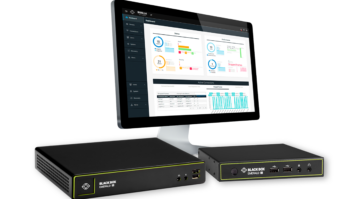 To paraphrase an old adage in business, what got you here today won’t necessarily get you there tomorrow. This is especially true when it comes to network infrastructure. The cabling and connectivity capabilities that previously powered your business – or your customer’s business – might not meet those needs five years, three years or even one year from now.
To paraphrase an old adage in business, what got you here today won’t necessarily get you there tomorrow. This is especially true when it comes to network infrastructure. The cabling and connectivity capabilities that previously powered your business – or your customer’s business – might not meet those needs five years, three years or even one year from now.
With more devices continually being added to networks, and employees needing to be connected whether they’re in the office, at home or on the go, the network infrastructure is now vital to productivity and business continuity. And greater demand for video connectivity and reliable, always-on collaboration tools can stress a network that’s not built to handle that amount of data.
Thanks to a shift to wired and wireless IP-based technologies, installers are seeing opportunities to expand their business into adjacent areas like building systems and other connected technologies. But with these new opportunities come new challenges, like helping customers plan and build a network infrastructure that can support their long-term technology and connectivity needs.
Installers that approach the network infrastructure with a lifecycle mindset can help not only their customers but also their own business in the long run.
CUSTOMER BENEFITS
Customers benefit from an infrastructure that’s intentionally designed to keep up with ever-growing device and data needs. This can help them avoid or at least delay costly rip-and-replace scenarios. And installers benefit from forming stronger relationships with customers by helping them not only address their cabling needs but all of their networking requirements.
A key challenge when implementing a network infrastructure is making sure it’s robust enough to support a customer’s long-term connectivity needs. Nobody can predict how technology will reshape work, or how quickly it will do so – consider how many businesses had to pivot to video collaboration tools almost overnight at the outset of Covid19 But there are indicators, such as the growth of artificial intelligence (AI) and prevalence of remote and hybrid work, that suggest a future-ready network infrastructure will become more critical.
Installers should work to not only understand what customers need today, but also how they anticipate using data and technology in the future. From there, installers can evaluate whether their current network infrastructure is sufficient to handle bandwidth demands and keep pace with the rapid evolution of technology.
FUTURE READY
While customer requirements vary, some things will always be certain about a network infrastructure. For starters, installers should understand that end users today look at their network the same way they look at their plumbing or electrical systems – they simply expect it to work. Just like you expect water to come out of a sink when you turn the faucet, customers expect similar always-on reliability from the network.
This need for optimal reliability can help inform certain decisions in the planning and design process:
- Cabling: Installers should consider using category 6A cabling, for example, because it offers the greatest potential to meet the needs of future applications. And it can deliver cleaner video transmissions than category 6 cabling by reducing issues like alien crosstalk, which is noise that can occur when multiple cables are installed in the same cable tray or conduit.
- WiFi: Installers should also ensure that the network infrastructure supports Wi-Fi 7, the next generation of Wi-Fi connectivity with data rates exceeding 10 GB per second.
- Cellular connectivity: More organisations are also looking to next-generation cellular networks for connectivity, especially for new IoT applications that depend on less latency and higher speeds. When going this route, installers should make sure their customer’s infrastructure can support cell-boosting technologies, like cell signal repeaters and amplifiers.
HOLISTIC MINDSET
Installers should think about how they can use a lifecycle mindset to do more than meet bandwidth and connectivity requirements. They also should consider how they can use the infrastructure to support better business outcomes for customers and help ease everything from the infrastructure’s deployment to its long-term maintenance.
One trend that more organisations are embracing is moving their cabling mounts from the closet to the ceiling. This can free up footprint in a building and remove unsightly cable closets, while eliminating distance limitations. Ceiling mounts also can easily support smart lighting systems and other applications like humidity and temperature sensors.
An intentionally designed network infrastructure can also create better employee experiences. Imagine smart buildings that can detect when certain employees arrive and turn on their office lights or activate technologies in conference rooms based on the meetings scheduled in them. It’s all possible with technology available today.
STRONGER RELATIONSHIPS
Expanding from traditional A/V into network infrastructure provides a good opportunity for installers to build on established relationships.
For example, distribution partners can help installers identify the best solutions to meet customers’ networking needs and help them stay on top of new innovations as they hit the market. Premier distribution partners can also verify how technologies have been proven, either via their own labs and testing capabilities, or through third-party testing like UL verification. Distribution partners can also test and verify the interoperability of new products, which can reduce the risk of integration issues in a customer’s building.
Most importantly, expanding their business into the networking side can be a good opportunity for installers to build stronger relationships with their customers. By advancing their role from a cabling contractor to a consultant and trusted partner, installers can help customers address their network infrastructure needs today and be in a good position to support customers again when their connectivity needs inevitably change.







